The Australian Institute of Professional Photography (AIPP), the last great Australian photo industry body, has officially closed due to impending insolvency. But this is far from the first time the Institute came dangerously close to crashing after burning through its cash.
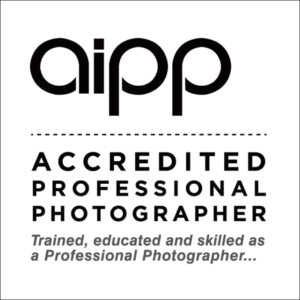
At the start of the Millennium – before digital photography and online technology dramatically altered working photography – the AIPP was close to broke and on its knees. This was a far more prosperous era for the photo industry, with numerous industry bodies serving various groups. We had the PMA supporting retailers, an association of colour laboratories, IDEA representing the interests of wholesalers and distributors, the ACMP for commercial photographers, and another group for schools photographers. They are all now part of the industry’s history.
Photography brands had the budgets to justify bank-rolling massive annual trade shows and undertaking ambitious marketing programs.
On its uppers, then upwards
So it’s startling that in November 2000, the AIPP almost folded due to impending bankruptcy. But even more surprising is that less than a decade later, it almost had $1 million in the bank.
The tide turned when Canon Australia came onboard as exclusive sponsor for the AIPP Australian Professional Photography Awards in 2002, leading to a 13-year partnership that concluded in 2016. Simultaneously, the AIPP secured sponsorship from Fujifilm for the major touring event series, Fujifilm Weekends.
As well as membership subscription fees, the sponsorship dollars allowed the Institute to build a solid nest egg. National Boards under the presidency of the likes of Eric Victor (with assistance of Gregory Hocking), Ian van der Wolde, Philip Kuruvita, Jacqui Dean and Alice Bennett laid the groundwork that left the AIPP with just shy of $1 million by 2009, according to financial data from a former AIPP Board member who asked not to be named.
Up until this point the AIPP was fundamentally run by volunteers, with two or three staff working admin keeping overheads to a minimum. IDEA (PICA at the time) provided ad hoc support and the annual trade show was the heavily subsidised venue for the APPA judging and awards.
When the AIPP established a more business-like National Office headquarters to run the institute, with a professional administrator in Peter Myers appointed executive officer in 2009, overheads naturally had to increase. At the same time, the photo industry was also changing. There was less cohesion, cooperation and volunteerism across the industry. Major brands moved toward in-house marketing programs, leaving less spending on third-party event sponsorship. Bad news for an organisation that was beginning to rely on this kind of revenue stream.
The concept of the professional photographer also became less well defined, as more enthusiasts turned photography into a ‘side-hustle’. The AIPP was left in a tricky position: welcomed these photographers with open arms, or leave them on the outer. On one hand, this exploding sector, if part of the AIPP ‘ecosystem’ could provide essential membership fee revenue, as well as the mutual benefits of participation in AIPP-sanctioned education programs; on the other hand, these semi-pro photographers were seen as devaluing the profession and were a group the AIPP members should be differentiating themselves from.
Depending on who is asked, the AIPP leaned too hard either (both?) ways.
The cost of an Institute
Based on the financial information supplied by a board member, who looked at limited data 2009, the AIPP mostly ran deficits. There are a few exceptions, such as 2010 and 2014 and most notably 2019, after the National Office was disbanded. The figures matched the financial data in Inside Imaging‘s archive.
During the National Office days, admin expenses became a major contributor to the deficits.
Here’s a breakdown of the financial situation in 2014, when the AIPP garnered a $31K surplus. Employment costs amounted to around $600K for six employees, and over $500K for administration expenses (office rental, etc), meaning National Office cost over $1.1 million in total.
Membership subscription fees generated $817K revenue. Sponsorship – including major sponsorship through Canon’s APPA and Nikon’s The Event – brought in $419K revenue. Running awards and events barely turned a profit, with revenue of $742K stacked against $737K of expenses.
When Canon Australia pulled its APPA sponsorship in 2016, it undoubtedly contributed to 2017’s $82K deficit. And by 2017 the AIPP had $514K left in the bank, meaning the Institute was down $400K over an eight year period. This meant something had to change to either generate more revenue or reduce expenses, or the Institute at its current deficit trajectory would go broke in a under a decade. Provided nothing went wrong. Which it did.
A growing number of AIPP members became furious with the National Office. It became increasingly expensive and was perceived by some to have little regard for members or the purpose of the Institute. There were (unsubstantiated) accusations that ‘corporatisation’ left the Institute management focussing on achieving KPIs, and that financial bonuses awarded for signing up new members meant some photographers were granted membership regardless of meeting prerequisites. Communication from National Office lacked transparency, and when concerned members attempted to find answers they often hit a brick wall.
Some members felt that control was appropriated and centered on the National Office and the Board, and away from State Councils, which had been the lifeblood of the Institute. The belt tightened on State Councils, preventing them from serving members with smaller community events and actions, while National Office funneled cash into big-budgeted, ritzy annual events at venues like SeaWorld. Sentiment was the Institute became more about pumping fuel into the awards than anything else, and most members were only in it to win it.
There were apparently attempts to reign in the National Office by members of the National Board and State Council, but this was to little effect, and fuelled the discontent among many members.
But – and this is a big one – the National Office scored some major successes. In 2015 AIPP executive officer, Peter Myers, along with then-president Ross Eason, secured ACCC certification for the Accredited Photographer title. This provided AIPP members the sole legal right to use the Accredited Professional Photographers and Accredited Video Producer logos, and is one of the last great achievements of the AIPP. It’s arguable whether this could have been implemented by a volunteer Board alone.
Other noteworthy results occurred while National Office was in swing, such as Chris Shain representing the AIPP at a 2016 Productivity Commission consultation into copyright. Chris was originally an ACMP member, and lobbied tirelessly for both organisations in regards to copyright. (We get the sense Chris would have done this anyway, with or without a National Office, but the backing of a peak body with ACCC certification likely helped open a few doors)
But at the end of the day members felt the Office costs far outweighed the benefits. This finally boiled over in early 2018 when membership began to drop off dramatically.
A mighty schism
The final straw was when a new revenue-generating plan was devised to offer the APPA critique model to amateur photographers, alongside APPA as the centrepiece of a newly-developed up-market annual event, Lenscape. Members abandoned the AIPP in sufficient numbers that cash flow projections dropped by $400K in a six-month period. The disastrous financial situation resulted in National Office closing and the National Board resigning, and Lenscape was canned.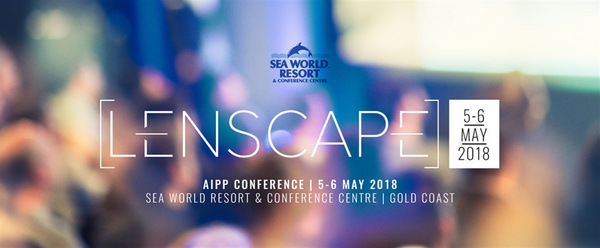
At the end of the 2017 financial year the AIPP had $514K in the bank, and after the schism this figure was reduced to just $107K in 2018. The significant deficit was attributed to employee termination pay-outs and other costs associated with closing the National Office, and the then-AIPP National Board had the foresight to shut down before it was too late.
‘Members not renewing made a large dent in monthly cashflow,’ said then-AIPP national treasurer, John Swainston, to Inside Imaging, in February 2018. ‘We had a hard look at the business, examining it as if we were closing the doors tomorrow, and it didn’t look good. If we didn’t take action we would have most likely run out of money some time in the second quarter. We had employees relying on us, obligations to sponsors – so we had to do something much more severe.’
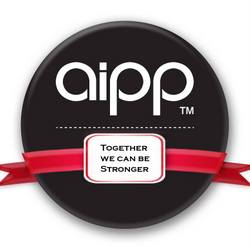
Without a National Office, the restructured and lower-cost AIPP scaled back and returned to the grassroots to meet member demands, resulting in an influx of membership renewals. Formerly disgruntled photographers rallied to keep the AIPP alive – it was uplifting. A Constitution Committee was formed to amend references to National Office, and return control to State Councils. The AIPP had a second chance to survive, with a ‘safe pair of hands’ in John Swainston taking the role of president.
But with $107K left in the bank to re-build, the AIPP was extremely vulnerable, and a careful strategy needed to be planned and implemented. In 2019, the AIPP remarkably achieved the biggest surplus in the last decade, with a surplus for the year of $170K, leaving it with $285K in the bank.
Inside Imaging asked then-AIPP national treasurer, Sara McKenna, to explain how:
I guess the short answer is that the costs were cut wherever they could be; commitment was made to stick to budgets and not over-extend; mistakes were uncovered and corrected; the desire for transparency and break free from the stigma the previous administration created was like life-blood; and Board members were there for the members selflessly. Correct financial direction was applied by the Board in the 2019 financial year, putting it in good stead to move forward successfully, as long as that direction continued.
By the time I’d joined the Finance Committee in June 2018, John Swainston’s Board had already had a close look at expenses of the AIPP. Many unnecessary subscriptions to services were cancelled, the National Office closed and the premises sublet for the remainder of the lease making it cost-neutral, and a general tightening of the belts in all areas. The 2018 financials are over-shadowed by employee-related expenses and termination payouts, required by law.
The AIPP was not in a position to afford staff, therefore the AIPP Board was quite operational in the first 12 months after the ‘Big Bang’. Most Board members were giving more of their time than ever before to re-stabilise the AIPP and keep any internal changes seamless for the members. It was recognised that this was not sustainable, but a short-term necessity.
The Board needed administration support and towards the end of 2018 they calculated the number of hours they could afford to pay and put on a handful of casual staff to assist remotely, trying to cover as a skeletal staff and at a much decreased cost than the previous National Office caused.
Editor’s Note: In 2019 admin and employee expenses amounted to $580K, around half that of the National Office ($1.1 million). In 2020, admin and employee expenses rose by $47K to $627K.
At the beginning of the 2019 financial year, the eight Councils were set up with bank accounts, risk-assessed funds (based on a flat amount plus a per-member top-up) and education on budgeting to become financially autonomous.
Councils were taught and encouraged to use their own small funds to create events at a local level, with an overall view to run cost-neutral, meaning some events were free to members and cost the Council, and some events had an attendance fee which helped keep the Council’s funds topped up.
This meant Councils no longer depended on national funds regularly and didn’t draw as much national man-power to run their own events. They could better deliver what their local members were wanting and felt more connected and responsible, like they were before National Office had removed this from them in the decade before.
The Council finances and budgeting was overseen by Melissa Neumann as the national treasurer, and myself as Queensland treasurer and National Finance Committee liaison to all council treasurers.
The Board also decided to remove budgets from Committees and requested that meetings take place via Zoom. Yes, that’s right, we used it long before Covid lockdowns made it popular! The Board also committed to not meet in person as often and used Zoom for most Board meetings. Extravagant habits of allowing the AIPP to pay for volunteer entertainment were brought into line with ATO claimable expenses guidelines and AIPP funds were used more responsibly.
I joined the Board as national treasurer in December 2018.
The AIPP books were assessed and, although the financial bottom line was decided to be accurate, the way the books were accounted for made it very difficult to see exactly where money was being spent. Early 2019 the Board decided to engage me, outside of my many volunteer duties as a Board Member and at a drastically reduced rate, to forensically assess the books and assist the temporary bookkeeper to move the bookkeeping to a transparent online system with better reporting categories and accurate allocations.
The books were back-dated to 1/7/2018 and, due to the difficulties of assessing transactions, took some time. It was discovered at this time that the system that financially managed memberships was reporting inaccurately, and membership fees were not correct for all members. A new membership system that would have a less expensive monthly cost was already being investigated. Until this was in place, manual reconciliations and member contact were required when issues arose.
Coming on Board, I found that there was no full inventory of assets, and depreciation schedules were hard to follow and showed missing assets. A full inventory was taken and correct depreciation reflected in the 2019 financial year. I also identified more than $100K in outstanding or un-invoiced debt, which I followed up and collected, mostly accrued since the ‘Big Bang’.
[Editor’s Note: Sara McKenna recalls some of the uncollected debt came from uninvoiced sponsorship contracts, sub-leasing the National Office space, and discrepancies in membership and event attendances. More details can be found in the 2019 report.]
There was an AIPP forecast and APPA forecast in place when I joined the Board. These were used to create a constant 18-month AIPP financial projection and an awards budget that updated spending and compared to the budgets in real time. The Board were kept abreast by reports at each Board meeting. The Councils for State Awards, and the Awards Committee, could always see how they were measuring against the budget set for them. The Awards Committee financial liaison was fantastic at quickly picking up on potential issues and working to keep the overall budget adhered to.
The 2019 calendar year saw more volunteer work, trust and autonomy that highly benefitted the AIPP’s finances. The volunteer culture was waning, however enough people were happy to step up for industry and Institute. The Board, under the Presidency of previous Treasurer Melissa Neumann, understood that we did not have resources and funds available to increase staff hours and needed to rely on the amazing volunteers and the autonomy of Councils to ensure member benefits and AIPP financial stability remained. The combination of the small staff and volunteers meant that the Board was able to start becoming less operational and concentrate more on governance and the future. An approach of essential transparency, returning to grass roots and giving the Institute back to her members was being worked towards.
Crash landing
At the AIPP 2019 AGM three board members – Sara McKenna, Melissa Neumann, and Dan O’Day – resigned after a vote for roles resulted in Neumann being unexpectedly ousted as president.
Board votes are a routine function of the Corporations Act, a procedure that in a smooth-running organisation is generally a formality which sees directors re-elected to their roles without opposition. So when Melissa Neumann was voted out, many felt behind-the-scenes infighting left the Institute lacking the continuity to move forward with clear vision.
It’s unclear why the leadership spill occurred. It’s hard to grasp the wisdom behind making the Institute appear unstable when it was already so fragile, having just emerged from an extended period of tumult. Although it was prophesied prior and at the AGM by two members – Hilary Wardaugh and Mel Anderson – with Hilary writing the board a letter explaining that ‘good governance requires stability, patience and time, and I would urge you to keep the stability’. With three board member resignations, the AIPP leadership looked far from stable.
As a result, then-AIPP vice president, Louise Bagger, was voted into the position of president. And then Covid hit.
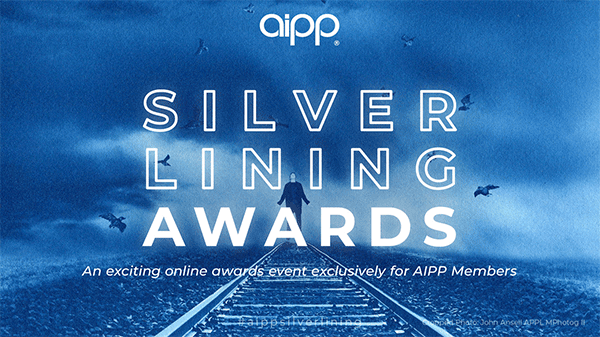
The Institute cancelled APPA and State Awards, and by the end over 700 members cancelled their memberships. In a FAQ on the closure, many cancellations are attributed to Covid impacting business, making membership no longer relevant or the fees difficult to pay. The Institute also notes the newly-formed Chapters, which controversially replaced the State Councils, were ‘barely operational’ and there were no nominations for new board members. The volunteer spirit that pumped life through the Institute’s veins for over 50 years just wasn’t there anymore.
Whether that’s attributed to the Institute’s perceived instability and lack of direction, the overall waning volunteer culture, Covid, or a combination of all factors is anyone’s guess. The last financial report, 2020, was quite grim with revenue from membership, seminars/functions/awards, and sponsorship significantly down. However, there wasn’t a major deficit and the Institute still had $248K in the bank.
Along with the introduction of Chapters, the board simultaneously re-jigged its structure resulting in re-naming the position of president to chair. This resulted in Louise Bagger standing down from the now non-existent role, and the chair position remaining vacant for over a month until Les Morrison was appointed the role.
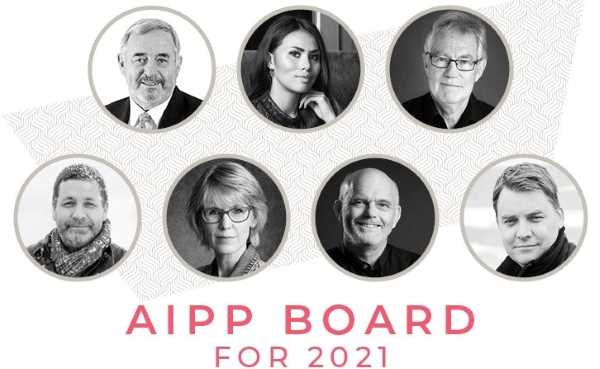
As Chair, Morrison was tasked with ‘connecting the AIPP with the wider arts community’, so the AIPP may build ‘stronger connections with arts organisations and funding bodies around the country’. According to the Closure FAQ, this was a failure due to the Institute’s ‘lack of repositioning and branding’, and ‘AIPP members are seen within the arts industry and government as tradespeople despite producing world-class photographic art’.
The AIPP also required APPA to be financially viable to run, although the Institute denies it was reliant on APPA being a financial success to continue to operate. In August 2021, AIPP operations manager Matt Palmer told Inside Imaging that the ‘AIPP would not rely on awards revenue to continue serving its members‘.
The day after entries closed for APPA, the AIPP announced impending bankruptcy and that it went into voluntary administration.
Sara McKenna notes that after the 2019 resignation, the AIPP disbanded or altered the strategies that were designed to get back on track. She believes that had the board not ‘upturned the apple cart in late 2019, the AIPP would have been able to go into 2020 stronger and retained flexibility enough to have not been affected as much by Covid.’
‘Even with the loss of membership, if correctly managed, the AIPP could have been stripped back even further and held on to funds to ensure survival. As it happened, I sadly think that the government Covid measures kept the Institute going longer than good and sound decision-making did.’
The loss of the AIPP diminishes the Australian photo industry. It has been a thoroughly enjoyable and equally challenging task to cover the Institute for the last eight years in Inside Imaging and before that, ProCounter and PhotoCounter. Hundreds of people have shared their thoughts and opinions with Inside Imaging about the Institute. Many, if not most, were in some way at odds with each other. But they were all united by being passionate and caring about the AIPP.
It’s particularly poignant to us that the demise of our peak professional photographers’ association has come a month after the death of one of the AIPP’s great leaders and mentors, and the father of the Australian Professional Photography Awards, Peter Foeden.





I will back up 100% all comments here by Sara McKenna. We had a plan and with Dan ODay, we were on the right track and could have withstood covid. So close, yet so far. Just such a shame.
Covid was the final nail in the coffin.
oh and btw why ‘Chair’ and not President? Was this changed in the Constitution?
The AIPP’s fate was set back in the 90s when the decision to nationally incorporate was made. At the time I sought advice from several existing national bodies … Law, Accounting, Medical and Architects. Their advice was unanimous and emphatic … don’t do it. Their advice came from a financial viability point of view and strongly suggested that there was a critical mass of somewhere around 25,000 members needed to make it work. From memory, the AIPP at the time had less than 2,500 paying members. Despite this information, which I sent to those seeking to incorporate, the AIPP foolishly went ahead and incorporated and thus incurred all of the associated compliance issues. The demise of the AIPP had less to do with ‘digital’ or ‘covid’ and more to do with historical over commitment.